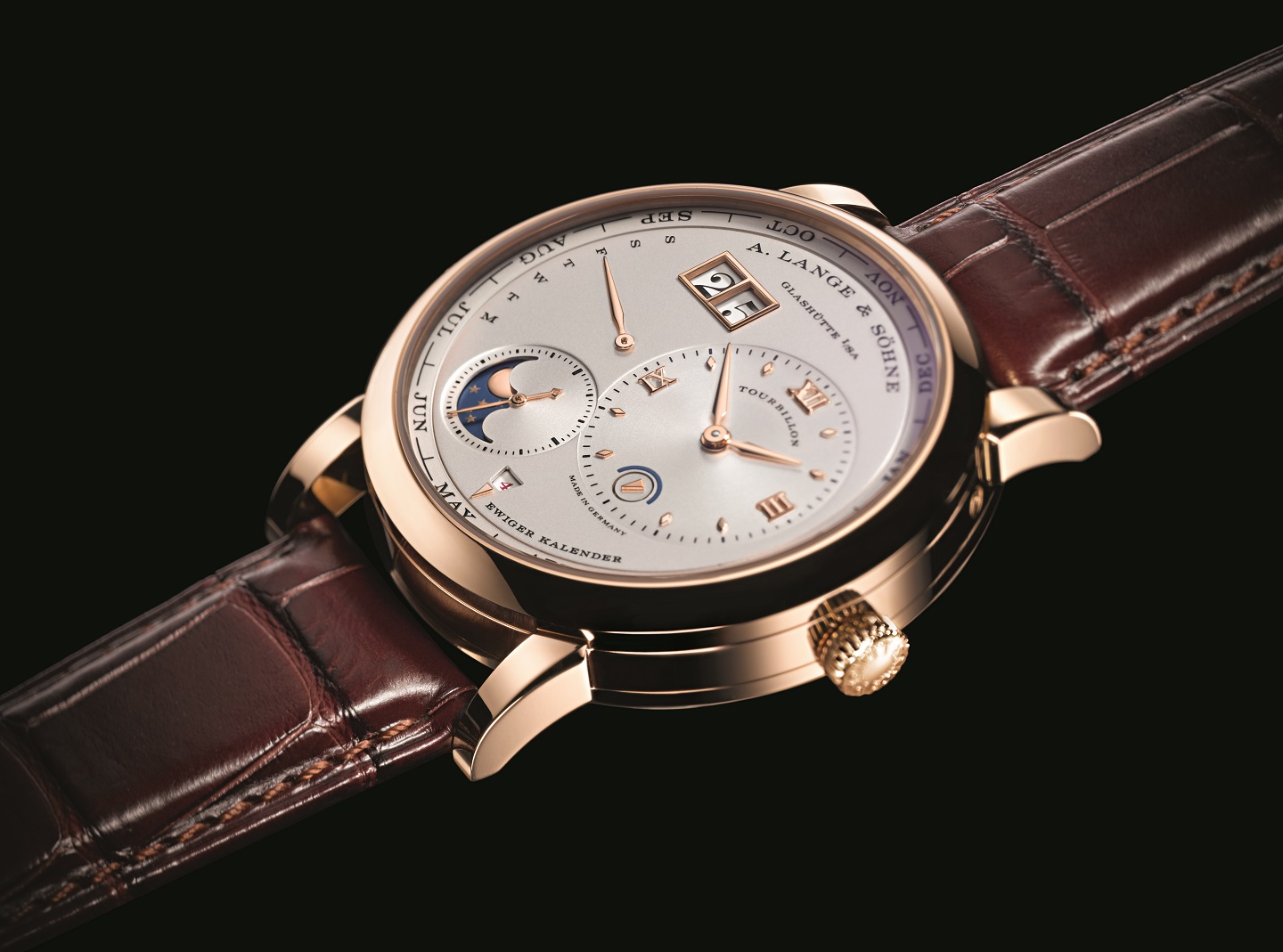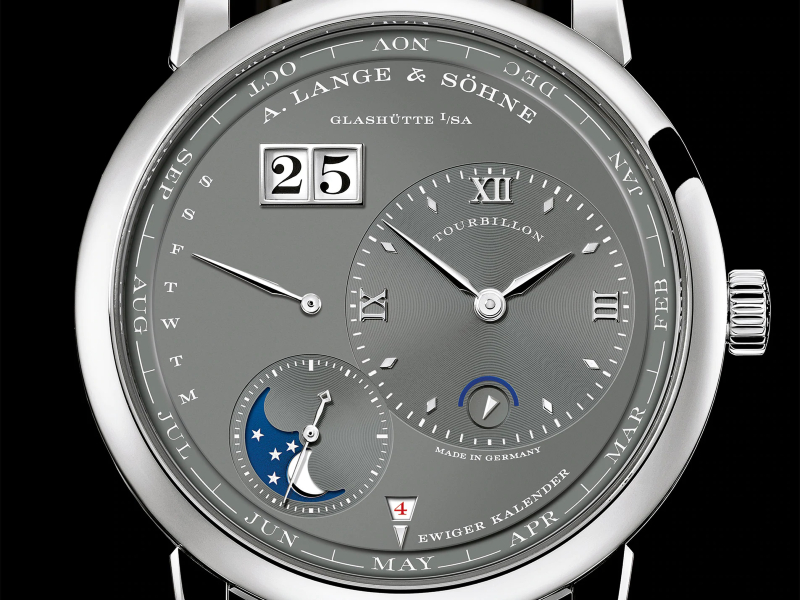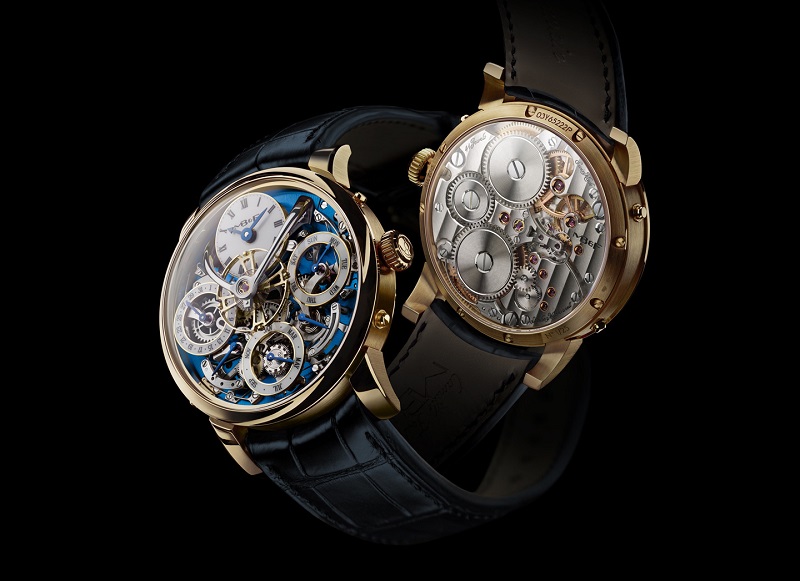
The development of a perpetual calendar for the Lange 1 Tourbillon Perpetual Calendar challenged Lange’s engineers and watchmakers in many respects (Photo: A. Lange & Söhne)
Generations of watchmakers have worked tirelessly to develop a mechanical calendar that will spare users the hassle of manually correcting the date on their watches for months shorter than 31 days. But what may sound like a simple task, in reality, involves a highly sophisticated mechanism.
To fully appreciate a perpetual calendar watch — invented in the 18th century — is to understand the complexity under the dial. A perpetual calendar watch is able to track the seconds, minutes, hours, the day of the week and date, automatically taking into account the 28, 30 and 31-day months as well as February 29 in leap years. However, century leap years — 2100, 2200 and 2300 — are considered common years in the Gregorian calendar. As such, perpetual calendar watches must be corrected by one day on March 1, but that leaves you 80 years until the next adjustment.
lange.jpg

A 31-day month is typically set as the default for traditional perpetual calendar mechanisms. For months with fewer days, the watch scrolls quickly through the 29th, 30th and/or 31st to arrive at 1st. Though extremely convenient, perpetual calendars do come with a few drawbacks: dates can skip and if the watch is adjusted while the date is changing, it can damage easily, not to mention the exorbitant repair costs.
Some innovators have taken the liberty to redevelop technical and design approaches to the complex mechanism. Here are three noteworthy concept changes that underscore the complexity of the perpetual calendar.
A. Lange & Söhne
Classical perpetual calendars require a programme that maps the different durations of all 48 months across the entire four-year cycle. It is usually handled by a programme wheel with 48 notches and steps, which correspond to the 48 months of three regular years and a leap year.
alangesoehne-lange-1-tourbillon-ewiger-kalender-720038-weissgold-1466303-lg.jpg

The development of a perpetual calendar for the Lange 1 Tourbillon Perpetual Calendar challenged Lange’s engineers and watchmakers in many respects. They were tasked to integrate calendar indications into the dial architecture without affecting the asymmetric arrangement of non-overlapping displays. The result was an entirely new display concept with a peripheral month ring that replaces the traditional notch programme wheel.
The month ring, driven via its internal gearing, rotates around its own axis by 30 degrees once a month. Inside of the gear rim features a circumferential contour with twelve recesses on its bottom side and a spring-loaded sampler lever glides along it, which is deflected by a magnitude that corresponds to the depth of the respective recess. The shorter month engenders the deepening of the recess, and then it gets more deflected. In February, an extender of the sampler lever contracts a cam beneath the leap-year disc, which tells the mechanism whether it is a common year with only 28 days or a leap year with 29.
MB&F
The lever is an integral part of any perpetual calender. As the date changes, it transmits information to the appropriate components and mechanisms by moving forward and backwards. It runs across the top of the complication and passes through the centre, which means nothing that might impede it can be there. This also means that perpetual calendars require a full dial, which may have cut-outs or windows, but not chunky embellishments that might block its motion.
mbf1.jpg

MB&F’s Legacy Machine Perpetual was developed from the ground up to eliminate the drawbacks of skipping dates and jamming gears susceptible to the lever’s motion. Its new system, a “mechanical processor” that replaces the lever, takes the default number of days in the month at 28 instead of 31, then adds the extra days as required. Therefore, there is no “skipping over” redundant days or the possibility of the date jumping incorrectly. On top of that, the processor also enables inbuilt safety adjuster pushers that automatically deactivate during the date changeover, eliminating any risk of jamming gears.
The processor takes on the form of an eye-catching suspended balance, with its staff running right down through the centre of the movement to an escapement on the back. Doing away with the lever has also allowed for new design aesthetics as there is additional space in the centre and the full dial is no longer necessary. The LM Perpetual features a 581-compoent calibre with no module and base movement. Encased in an open dial, the full complication can be appreciated at all angles.
Audemars Piguet
Perpetual calendars are among the most challenging watchmaking feats and require a lot of expertise. So when brands set out to innovate the already-complicated chronograph, it can be extremely tough. Audemars Piguet’s Royal Oak Selfwinding Perpetual Calendar Ultra-Thin was one of the few that came out the other side. It is the world’s thinnest automatic perpetual calendar wristwatch with a 2.89mm movement and a case of 6.3mm in height.
ap.jpg

During leap years, perpetual calendars have to jump the date from the 29th instead of 28th in February to March 1. This is usually handled by a four-faced cam that rotates once every four years. Audemars Piguet replaced the four-faced cam with a 48-step program wheel, which considerably shaved off the watch’s height. The manufacture also integrated the end-of-the-month cam to the date wheel.
By rearranging, merging and flattening the three-level perpetual calendar functions into a single layer, in addition to a titanium case and bracelet, Audemars Piguet was able to reach a impressive lightness and record-breaking thinness.


